Light doesn’t just illuminate a space — it defines it. The way it falls across surfaces, reflects off textures, and interacts with form shapes how a room feels long before you notice its furniture. At Furnistør, we think of lighting not just as a fixture, but as a material in itself.
We often work with contrast. Soft light against hard edges. Rounded opal glass set into sharp metal frames. A matte ceramic lamp beside a polished oak cabinet. These pairings create tension, but also calm — a balance that brings a room to life without overwhelming it.
Why light matters more than we think
Think about where you feel most comfortable in your home. It’s probably not under a cold ceiling spotlight. It’s by the window in the late afternoon. Near a lamp that glows softly against the wall. Light with temperature. Light with direction. Light that wraps around a space instead of flattening it.
That’s why we focus on using glass diffusers and warm LED sources across our lighting collection. We avoid visible bulbs where possible and favor forms that guide the light — not just emit it. This creates a glow that feels intentional, rather than a glare that dominates the room.
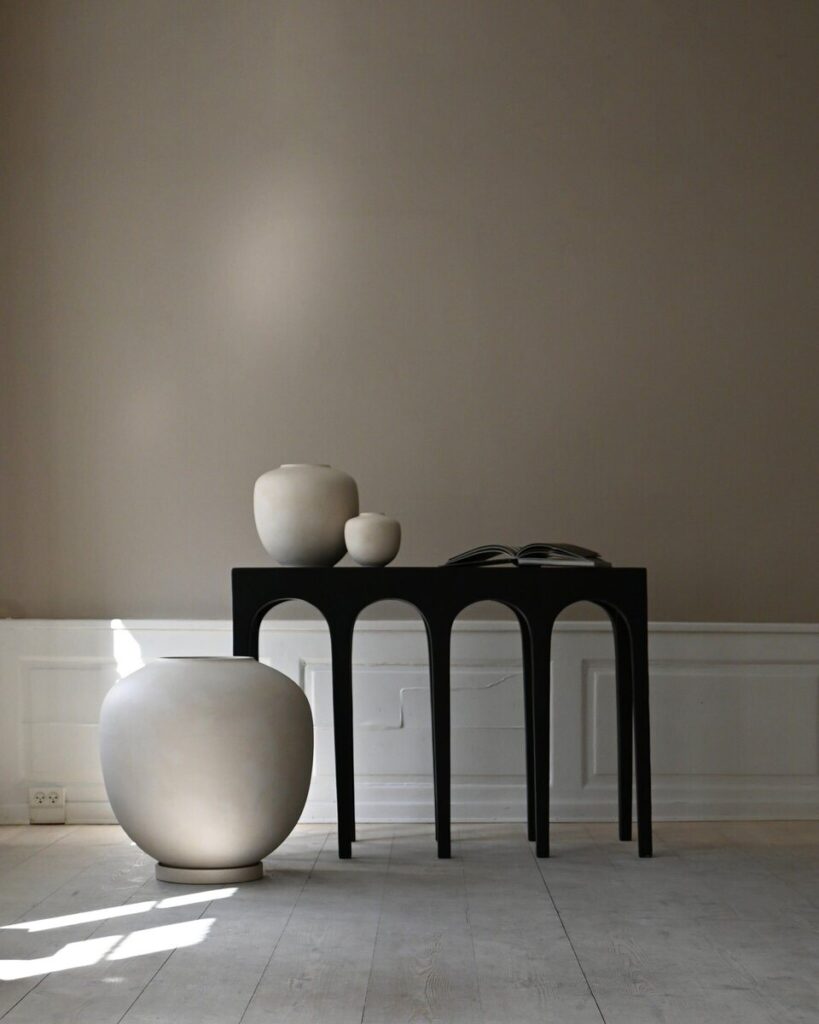
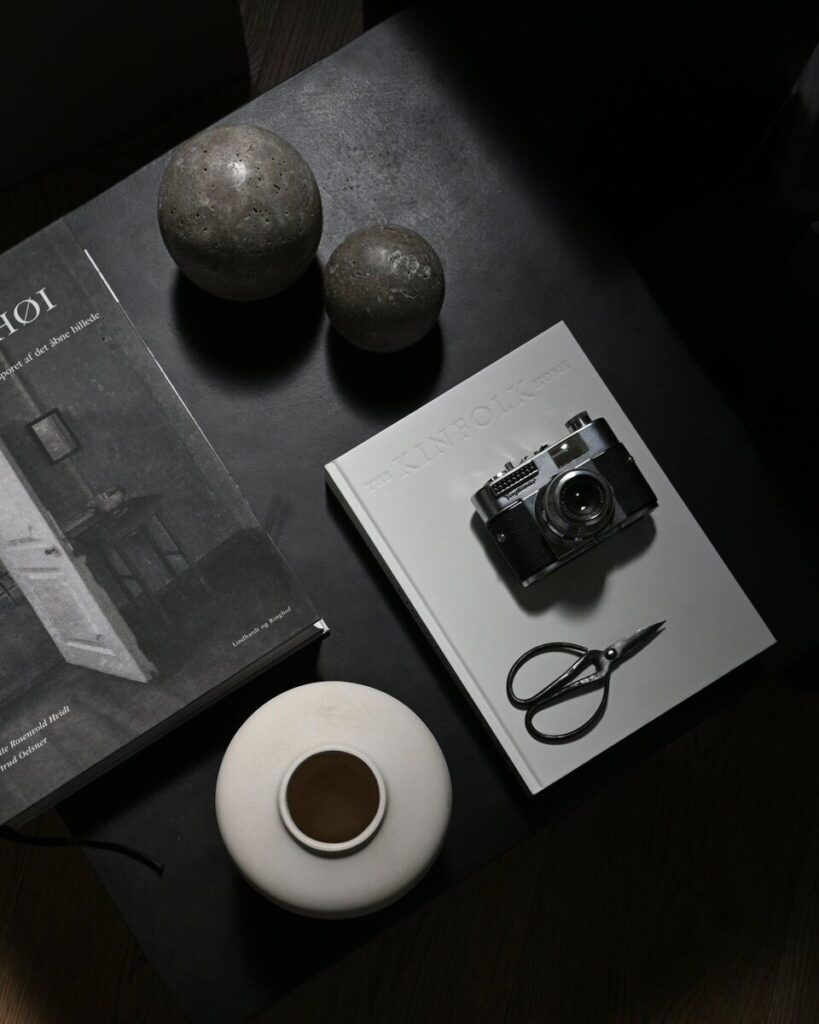
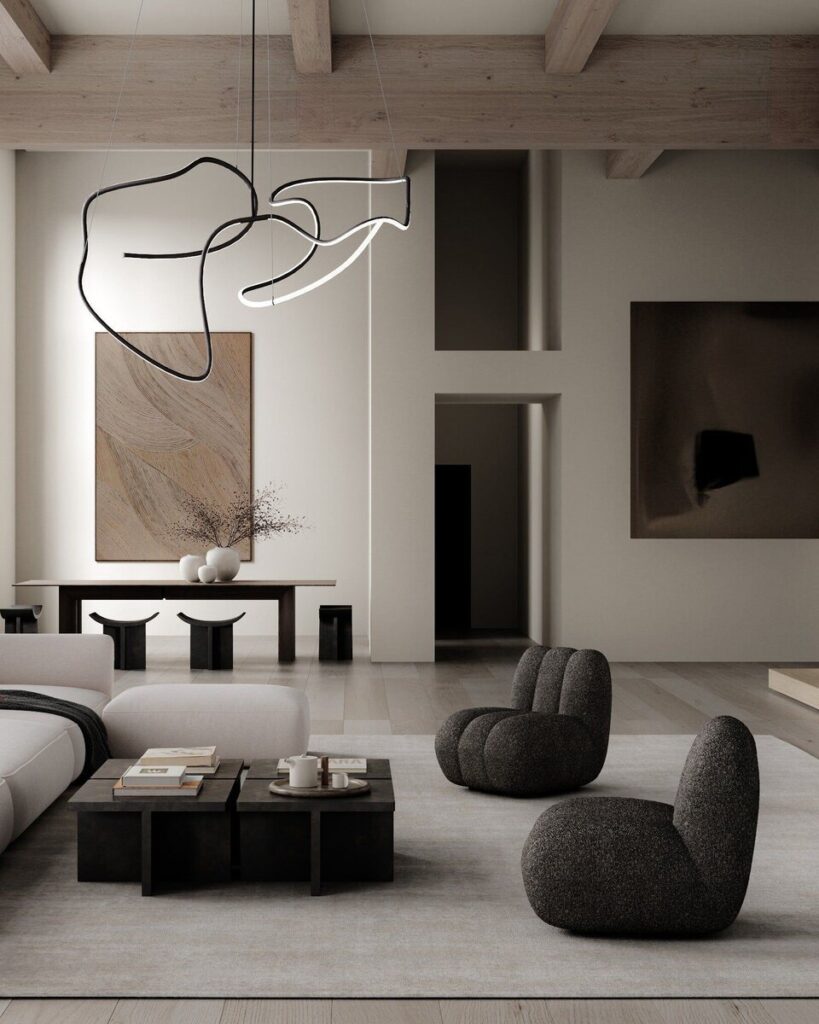
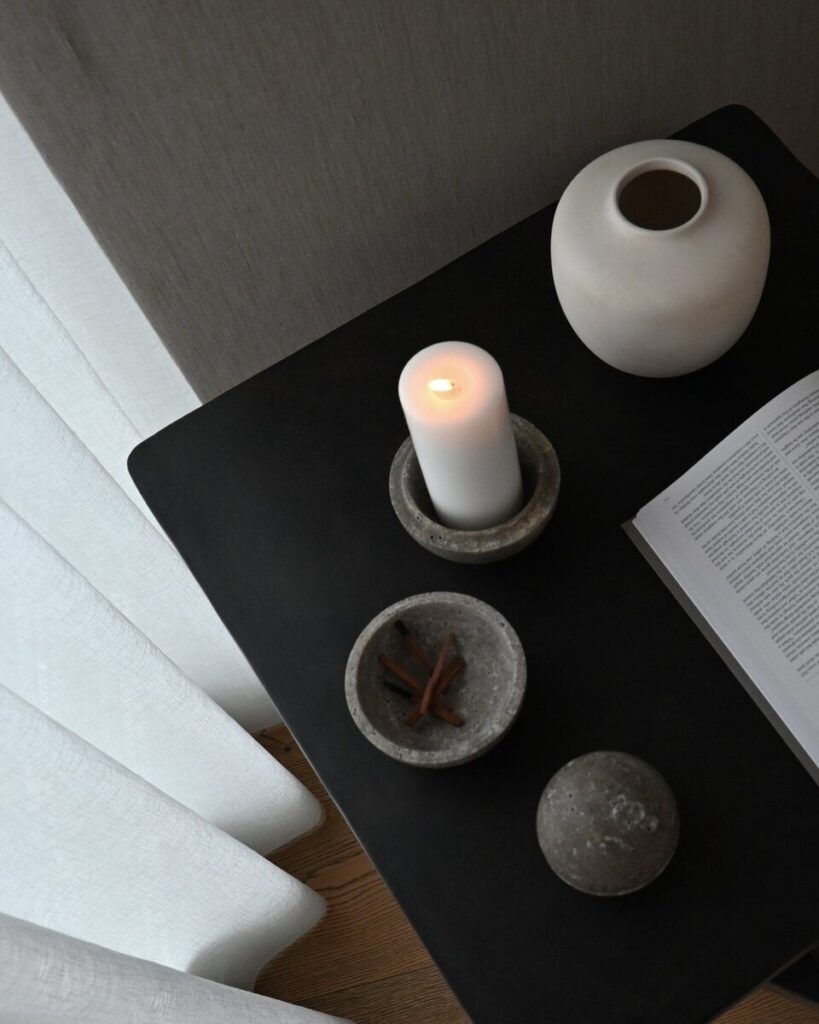
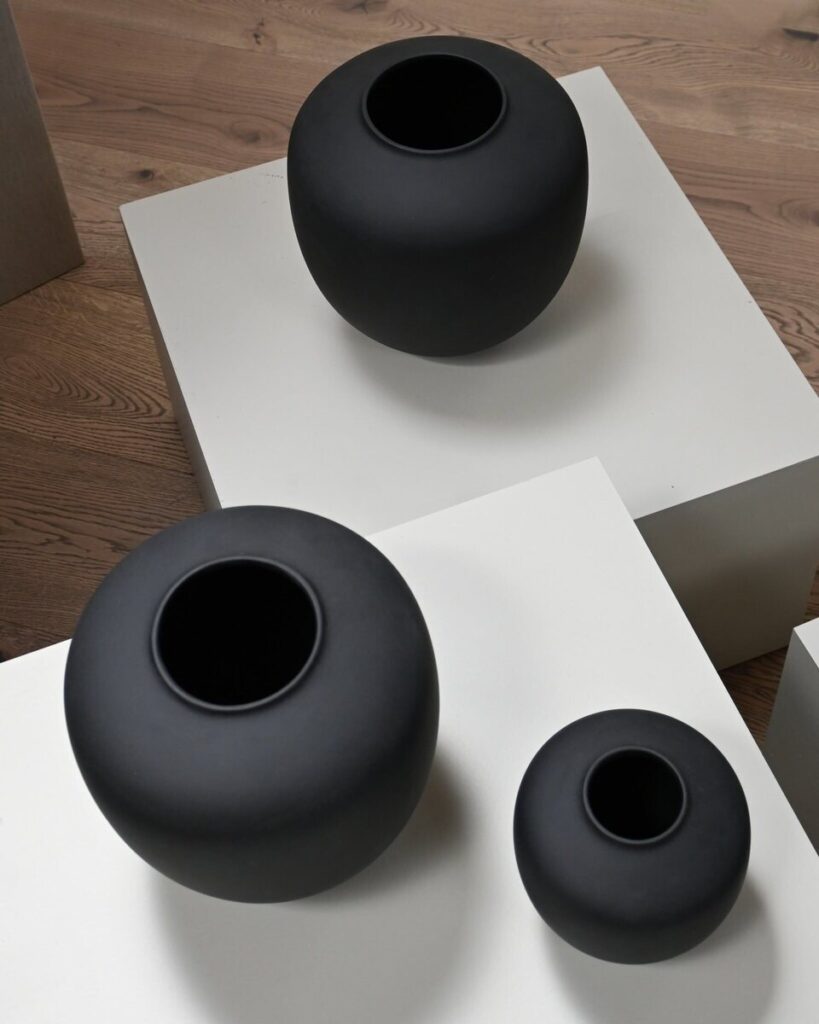
Our lighting designs are often sculptural. Not in a decorative sense, but in how they occupy space. Some stand tall and structural, like our floor lamps. Others feel almost atmospheric, like the table lamps that soften a sideboard or nightstand.
We look to Scandinavian traditions in this — not just for form, but for mood. There’s a reason homes in the north rely on layered lighting. Long winters demand it. But so do evenings in smaller spaces, or corners that need a quiet glow. We recommend using at least three sources of light in any room: one main, one directional, one atmospheric.
Materials that shape the glow
We choose materials based on how they react to light. Opal glass diffuses evenly and gives a natural, soft presence — ideal for bedrooms or quiet living spaces. Brushed steel reflects just enough to catch light, not scatter it. Amber-tinted glass adds warmth without going yellow, which can often feel dated or artificial.
Even our cables and switches are chosen to disappear — or quietly complement the fixture. Every part of the piece contributes to its visual weight. A table lamp should feel like an object with presence, not just a utility.
We also avoid overdesign. Lamps that scream for attention lose their purpose. Instead, we focus on pure geometries — spheres, cylinders, cones — grounded by material honesty. If you’re interested in how we approach this, this piece on materials goes deeper.
Soft light doesn’t mean weak light. It means light that lives well with form. When placed next to furniture with hard edges, strong silhouettes, or clean surfaces, it brings out their best qualities. It reveals the intention behind the design — and helps the room feel finished without being full.
If you’re building a space that needs light with softness and structure, we recommend exploring our curated Lighting collection. Each piece is chosen for how it interacts with materials, shadows, and your day-to-day rhythm.
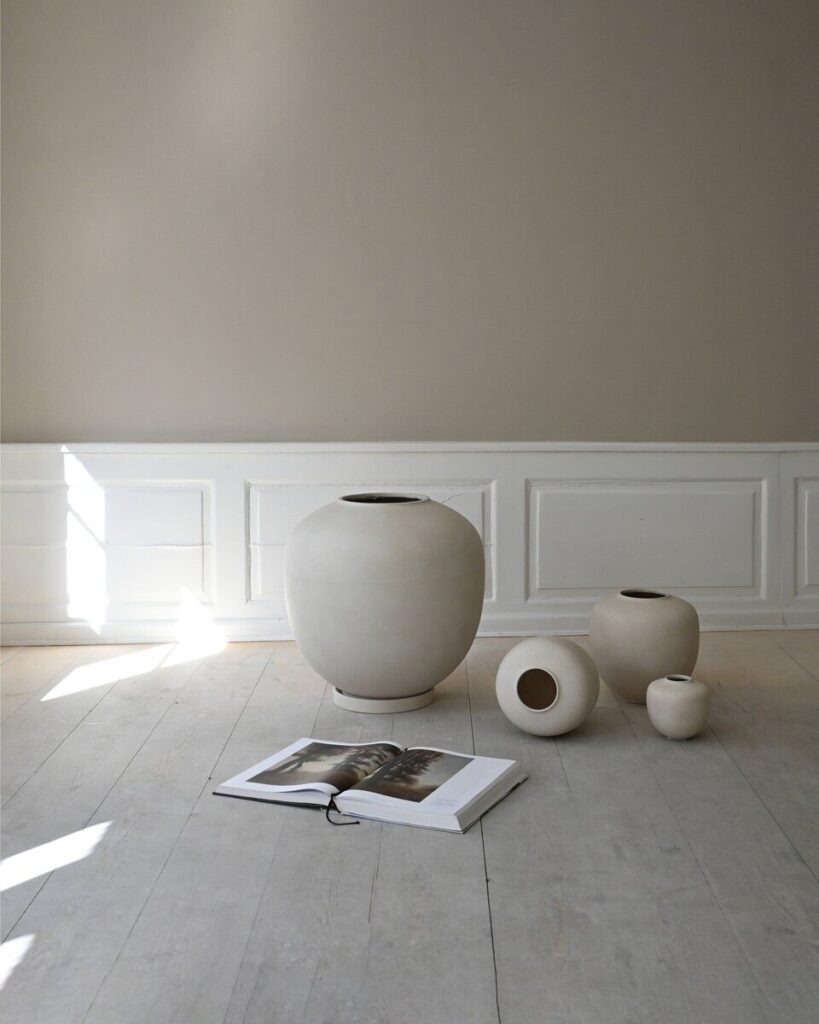
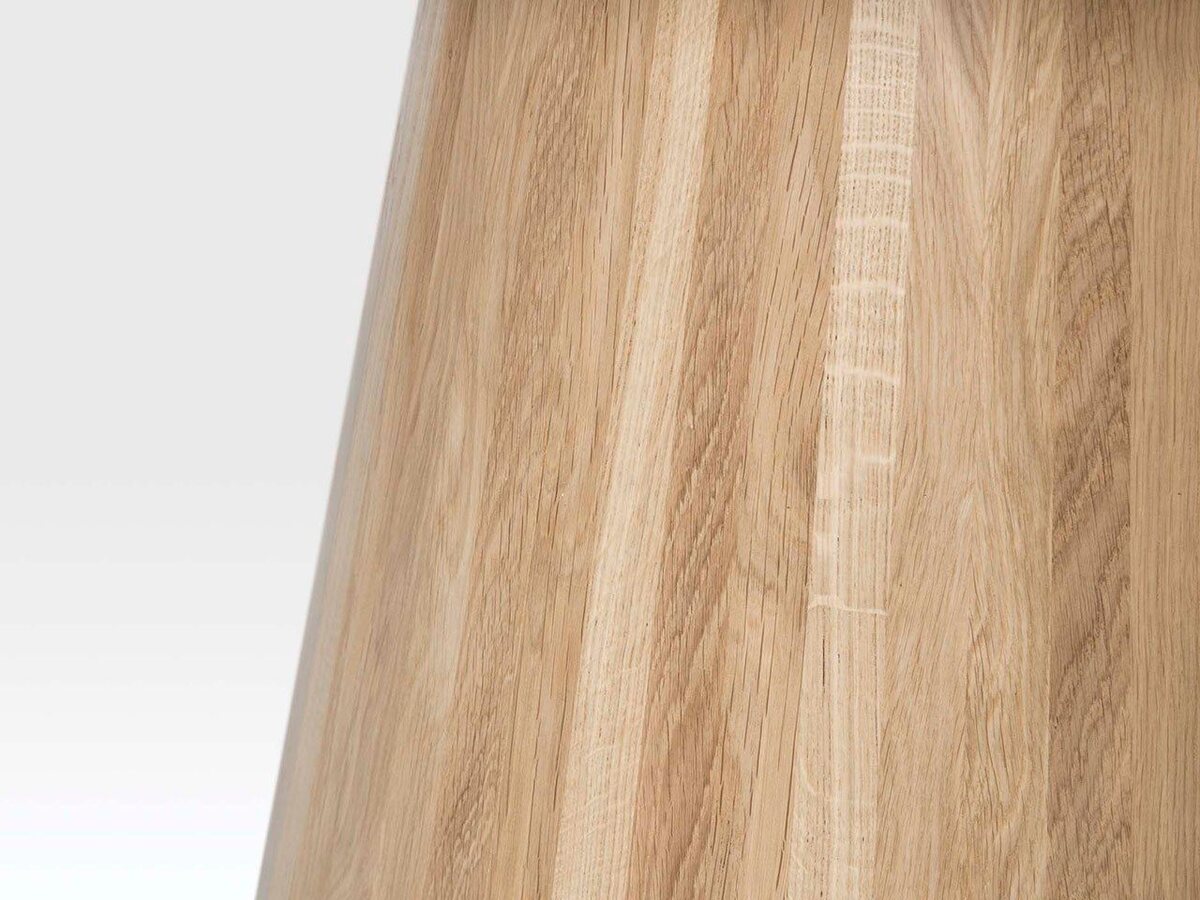
 Elementor
Elementor

3 Comments
Join the discussion and tell us your opinion.
Reading this was like stepping into a workshop. Loved the sensory descriptions and routine snapshots.
That part about hand-planing surfaces gave me chills. Such respect for tradition.
I could almost smell the sawdust. More behind-the-scenes like this, please!